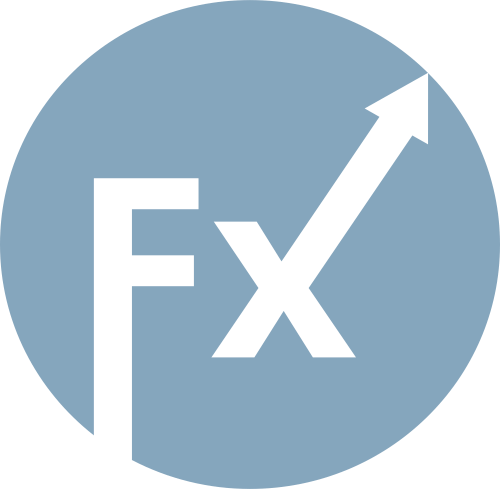Euro se stalo překvapivým vítězem nedávných tržních otřesů způsobených cly a vyvrátilo dřívější konsensus tím, že se vůči dolaru vyšplhalo na tříleté maximum, neboť Evropa se v globálním chaosu ukázala jako relativně bezpečná sázka.
Hnací silou pohybu měny je rostoucí nervozita globálních investorů z vlastnictví amerických aktiv, která je nutí prodávat a přesouvat peníze zpět domů. V Evropě tyto toky posilují euro.
„Peněžní toky se staly výrazně většími než obchodní toky,“ řekl Kit Juckes, hlavní devizový stratég společnosti Societe Generale (OTC:SCGLY).
„Pokud americká vláda způsobí pokles akcií a sníží ziskovost amerických společností, měli bychom si položit otázku, zda chce zbytek světa stále vkládat všechny své peníze do amerických dluhopisů nebo akcií.“
Od 1. dubna, tedy den předtím, než americký prezident Donald Trump zavedl nová základní 10% cla na všechny ekonomiky a uvalil cla v celkové výši 20 % na Evropskou unii, euro vůči dolaru posílilo o více než 5 %.
Trumpovo čtvrteční rozhodnutí pozastavit vyšší odvody na 90 dní podpořilo největší jednodenní skok eura od roku 2015. Do pátku se dostalo na tříleté maximum nad 1,14 USD a navázalo tak na rally, která začala o několik týdnů dříve poté, co Německo oznámilo rozsáhlý plán výdajů.
The European Central Bank, at the end of the July meeting, expectedly kept all the parameters of monetary policy unchanged, realizing the basic and most expected scenario. Market participants ignored the formal results of the July meeting. The EUR/USD pair retreated a few tens of points (instead by inertia), but almost immediately the initiative was taken over by the buyers, who even updated the three-week price high, coming close to the boundaries of the 18th figure.
What is the reason for such a market reaction? Let's start with the fact that traders had already factored the results of the July ECB meeting into their calculations by June, when the results of the previous meeting were announced. The central bank has unambiguously made it clear that the next round of interest rate cuts will not take place earlier than September, but will definitely not occur in July. Therefore, the result neither surprised nor disappointed, but also did not inspire.
However, ECB head Christine Lagarde at the final press conference gave support to EUR/USD buyers, stating that the central bank can afford to observe developments and risk changes "over the next few months" without taking any action. It should be recalled here that ahead of the July meeting, reputable agencies such as Reuters and Bloomberg surveyed leading economists, most of whom expressed confidence that the next round of QE easing would take place in September. And now the question arises: does the time frame announced by Lagarde ("a few months") include a September meeting? The question is at least debatable.
However, she made a critical remark, stating that a quick resolution of the trade conflict "will stimulate economic activity, improve the investment climate and overall market sentiment".
In other words, Lagarde "tied" further actions of the central bank to the results of trade negotiations between the U.S. and the European Union. At the same time, the head of the central bank did not utter the word "pause" when assessing further actions by the ECB. This is also an important point, as the corresponding verbal constructions are thought over and built by speechwriters in advance, so every word "has weight" (even if it is absent).
Following the July meeting, market expectations for dovish policy weakened significantly. According to Bloomberg estimates, the probability of an ECB interest rate cut in September has decreased to 23–25%, down from 40–45% prior to the July meeting.
In response to Lagarde's rhetoric, the EUR/USD pair updated its three-week price high, reaching 1.1789.
Additional support for the pair's buyers came from conflicting U.S. PMI indices released on Thursday. The manufacturing activity index for July unexpectedly fell to 49.5—its first drop into contraction territory since December of last year. Most analysts had forecast a rise to 52.7 (compared to 52.9 in June). Meanwhile, the U.S. services PMI rose more than expected, hitting 55.2 (versus a forecast of 53.0). The composite PMI increased to 54.6, marking its strongest level since December 2024.
They suggest that the strong services sector is offsetting weakness in manufacturing, supporting overall economic growth. However, the contraction in production is a troubling signal, indicating the potential impact of Donald Trump's tariff policies.
It's also worth noting that the U.S. labor market data released on Thursday was quite solid. Weekly initial jobless claims came in at 217,000—below the expected 227,000. More importantly, the indicator has shown a downward trend for six consecutive months, reaching its lowest level since April 2025.
Despite this, the mixed fundamental picture prevented EUR/USD buyers from breaking through the 1.18 level. At the same time, sellers failed to take control. Market participants remain frozen in anticipation of the outcome of trade negotiations between the U.S. and the EU. This is likely the key fundamental factor that will determine the direction of the price in the medium term. All other elements—even the July ECB meeting—play a secondary role.
From a technical standpoint, EUR/USD on the daily chart remains between the middle and upper lines of the Bollinger Bands and above all Ichimoku indicator lines (on the H4 timeframe, the picture is similar, with Ichimoku forming a bullish "Parade of Lines" signal). The technical outlook favors long positions, with an initial target of 1.1830 (the upper Bollinger Band on the daily chart). However, the fundamentals serve as a warning: a negative outcome of the negotiations could completely reverse the technical picture in favor of EUR/USD sellers.

QUICK LINKS